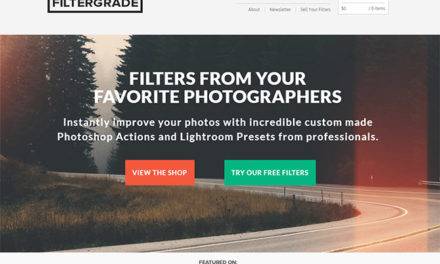Photography packages are one of the key sales drivers for professional photographers. They allow your clients to bundle together everything they need in one attractive hit, which can help to push up your average sales figures and increase your popularity.
But how do you go about putting together a package that will sell? Here’s how to get started, whether you have an existing photography business or are just starting out.

Image by Adina Voicu from Pixabay
1. Think about what you like to shoot
The first rule in any business-related decision with your photography is to determine whether you actually want to do the work you are considering.
Photography is not usually a steady or low-effort job. It’s something that we have to put our hearts and souls into, it can take up most of our time, and running your own business means rolling with both the good and the bad. So, why would you do any of that if you don’t actually enjoy it?
There are plenty of office jobs out there which are well-paid yet boring and unenjoyable, so if you just want to check in, get paid, and check out, photography isn’t for you. But if you want to run a photography business, you should be thinking about the parts of photography you love – and then doing more of those.
If you love portraits, focus on portraits. But if you hate working with kids, you shouldn’t be marketing towards young families. If group shots make you want to cringe, then make sure your packages are for individual sessions. And if the idea of shooting a wedding is your personal nightmare, then don’t ever try to position yourself as a wedding photographer.
When you know what you like to shoot, you have the first basis for your packages in place. For the sake of demonstration, I’m going to present a fictional photographer to run through this exercise with you. Her name is Stacy, and she loves taking pictures of seniors and portraits of young adults. So, that’s what she will focus on with her packages.

Image by andreas160578 from Pixabay
2. Think about what your customer wants
You know who your ideal customer is, right? If not, you should be going and doing that research (which is a whole different exercise, so we won’t go into it here). Stacy’s customers are seniors, young adults, and the parents or older siblings of these individuals who want to purchase a photoshoot as a present.
Now, what does your customer want? Here are some general ideas from across the photographic industry:
- Older customers and families may want prints to hang on their walls
- Seniors, teens, and young adults probably want something to put on social media
- Parents want something to remember their kids by when they have moved out
- Professionals and college students want a professional-looking headshot that will represent them well on resumes and LinkedIn
- Pregnant women want a record of their bump that makes them feel beautiful when they look back on it
- Couples who are getting married often want both a digital album to share with everyone, and a physical album to browse through, as well as maybe a print for their home
- Pet owners want something to hang on the wall
- Business owners want shots for their website, corporate literature and advertising, and in-house literature
- Fashion brands want images that will sell their clothes, to use in lookbooks, to publish on magazines, to post on social media
- Creatives want shots to put in their portfolio that will showcase their skills
- … and EVERYONE wants to look good!
Of course, there are many more examples of niches out there – so you need to know where your customer is.
So, Stacy knows that her customers want an image that captures a moment in time, that moment when their youth and beauty are in full bloom. They want something that looks good online and will make them the envy of all their friends.
But at this transitional age, these images may have to represent them as professionals as they begin to enter the world of work, too.
On top of this, family members are likely to want prints to hang in their homes.
Stacy has two deliverables: digital images, and prints.
3. Learn average order amounts
What do your customers normally order? If you already run a photography studio, you will have this answer in your sales books. Maybe people usually buy one print, but umm and ahh about whether they should get a second print. Maybe they like to go for two hours of studio time to be safe, or four hours, or one.
You’ll have that data already, so it should form the basis of your packages. Stacy sees that most customers like to shoot for two hours, and they will buy one or two prints. She also feels like she might be able to persuade more people to go for two prints if they get a discount, which is crucial to her planning.
If you don’t yet run the business you want to start, you can look at industry averages as well as asking people who would be in your demographic for their input. You can also look at what other local photographers are offering (though remember that this shouldn’t be a race to the bottom on prices – you have to charge what you feel you are worth, not just less than the other guys. Your work should sell itself based on quality).
4. Create value for your customer
Now, let’s go with some numbers. These are totally made-up numbers used for ease of math, so don’t worry if they don’t look anything like what you charge!
Stacy likes to earn at least $100 an hour while shooting – especially as she knows she needs to cover editing time, too. She can get prints made at $40 each, though she likes to add a mark-up to $50 for the additional time she will spend ordering and checking the prints.
Now, if a customer was to order two hours of shooting plus two prints, that would normally cost them $300 under Stacy’s normal pricing. Here’s where she can get nifty. She can choose to put in a discount that makes sense to her – maybe selling the prints at cost of $40 each, or cutting the second hour down to $80 because all of the travel and setting up is already covered at that point.
Wherever she makes the cuts, the customers don’t need to know. All they need to know is that the new price of the package is going to be $280, which represents a saving for them.
The value for the customer is that they get a discount on the package that they wanted anyway. The value for Stacy is that once the order is placed and paid for, that income is guaranteed. She doesn’t have to do the shoot and then work hard to persuade the clients to purchase prints afterwards.

Image by Lorri Lang from Pixabay
5. Make a standard, premium, and VIP package
Next, let’s look at setting up a collection of packages that will work for you.
The first thing to know here is that human behaviour often leads people to go with the ‘middle’ package, the thing that is priced below the most expensive but above the cheapest. This doesn’t feel like they are shelling out too much, but also gives them a better sense of getting value.
So, your middle package should be the thing you want to sell most of. You don’t want to overcomplicate things here, either – three packages is enough. Five, or ten, or fifteen will only confuse the customer and stop them from making a decision.
In Stacy’s case, she thinks her new $280 package is fine, but it could be better. So, she creates a premium package which has a special addition – an extra hour of shooting with a wardrobe change, plus an extra print. She can add this up at $450 under normal prices, so a discount to $410 works fine.
This is the one she wants to sell the most of, because it’s a much better deal for her. She gets more cash up front and only has to shoot for an extra hour, which means she can still fit in multiple shoots in a day.
Now, her VIP package will be the most expensive. It’s the one most people won’t go for, but she can still dream big and decide how much she wants to get paid.
Stacy adds a beautifully printed album to her VIP package. It costs $100 to print, but she also wants to add another $100 for the time it will take her to do layout and design the album. She can round this out to $600 for an even-number price total.
To recap, Stacy now has:
- A standard package, including the most popular options her customers go for, at $280
- A premium package with upgrades to $410, which will likely be her most popular package going forwards
- A VIP package which gives her $600 and the highest rate of pay per hour worked
Just by doing this simple marketing trick, she has increased her average sale per customer from the previous $250-$300 up to $410. Pretty neat, isn’t it?
6. Present your packages
Now you have decided on your packages, it’s time to present them to your customers. Make sure that they can see what they get with each package, and what they could get if they upgraded to the next one – a comparison table often works well.
Make this information clear and easy to read, as well as easy to find on your website. You can also get a PDF brochure designed with examples of shots from each style of photoshoot, and the finished products, to hand out either digitally or printed.
If you can create a button on your website which allows customers to click on the package they want, put it into their basket, book, and then pay, you will make it a lot more likely that sales will go through.
7. Go seasonal
There’s one last section to this guide, and that is on adding extra seasonal packages. Not all photographic niches are suitable for these, but if they work for you, they can be a great money-maker.
First, you pick an event, or seasonal theme: for example, Halloween. You get yourself some spooky props, some costumes in different sizes if you want, and a location or studio backdrop that will fit the bill.
Next, you create a seasonal package priced a little higher than normal to reflect the fact that this is a limited-time event. You schedule a set number of slots into your calendar, and then you put them on sale.
The limited time together with the limited availability will make this a hot package, especially if you can show examples of what the shoot will look like for those who are on the fence. Get the right note, and you will be sold out easily!
Put these seven steps into play, and you will have a great selection of packages which your customers will love. Continue to tweak them as you go forwards, reacting to the feedback you receive and whether customers are asking for extras and add-ons regularly – just let each package sit for a while before you make changes. Increase your prices annually, and just like that, you’ve got a ticket to success!





